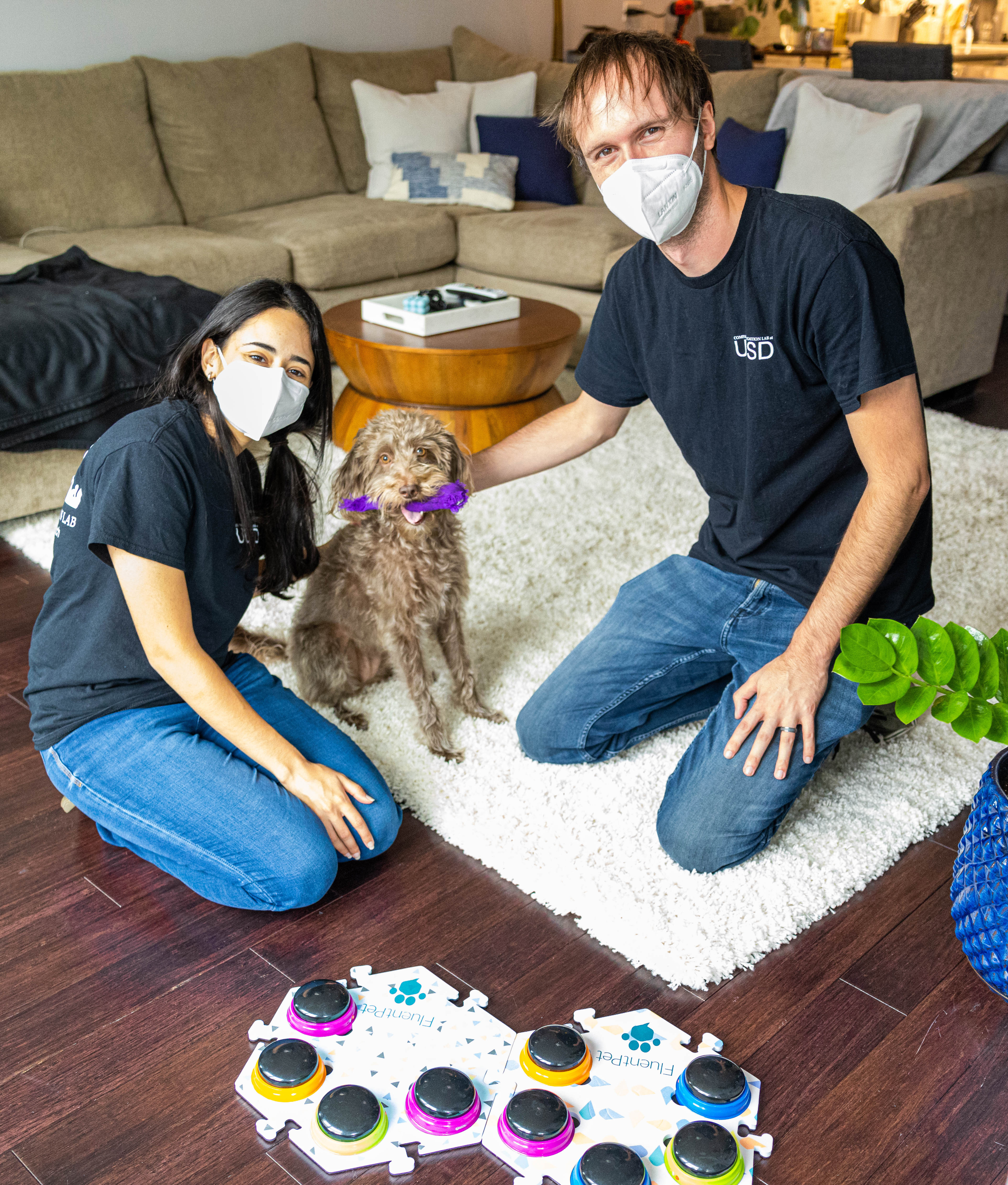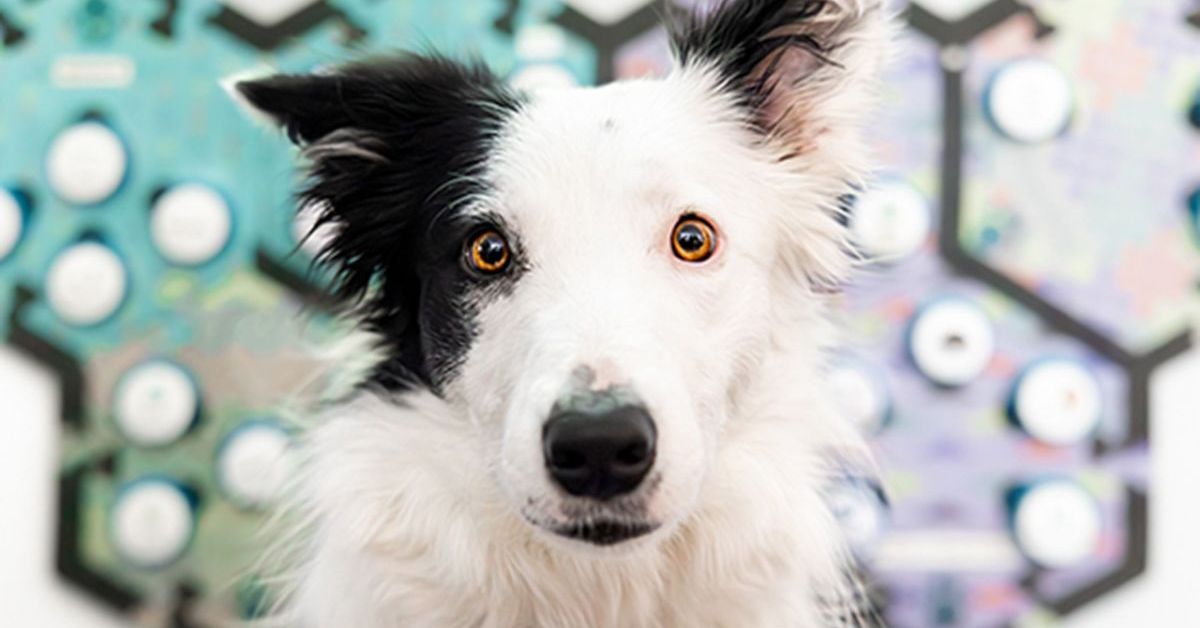Dogs Understand Words from Soundboard Buttons, Study Reveals
The study is the first empirical paper to emerge from the world’s largest longitudinal project on button-trained pets led by UC San Diego
Story by:
Published Date
Story by:
Topics covered:
Share This:
Article Content
If you’ve seen those viral social media videos of dogs using soundboard buttons to “talk,” you’re not alone. These buttons have taken the pet world by storm, leading to impressive and sometimes seemingly miraculous feats shared across platforms like TikTok and Instagram. But are these dogs truly communicating, or are they just responding to cues from their owners?
Now, a new study published in PLOS ONE – by researchers from the University of California San Diego and other institutions – reveals that dogs trained with soundboard buttons can indeed comprehend specific words, producing contextually appropriate responses. Led by Federico Rossano, associate professor in the Department of Cognitive Science at UC San Diego and head of the Comparative Cognition Lab, this is the first empirical study emerging from the world’s largest longitudinal project on button-trained pets.

Rossano, who is also featured in the popular new Netflix documentary “Inside the Mind of a Dog,” emphasizes that this research is just one step in his lab’s ongoing investigation of interspecies communication.
Key findings: The study shows that dogs trained to use soundboards responded appropriately to words like “play” and “outside,” regardless of whether the words were spoken by their owners or triggered by pressing a button, as well as whether the buttons were pressed by the owner or an unrelated person. This suggests that dogs are not merely “reading” their owners’ body language or presence but are indeed processing the words.
“This study addresses public skepticism about whether dogs truly understand what the buttons mean,” said Rossano. “Our findings are important because they show that words matter to dogs, and that they respond to the words themselves, not just to associated cues.”
The research involved two complementary experiments. The first was conducted in person, with researchers visiting 30 dogs’ homes across the country to test their responses to soundboard buttons. The second experiment utilized citizen science, where 29 dog owners conducted the trials themselves at home under remote guidance.
The study’s methodology was rigorously pre-registered, ensuring transparency and replicability. This pre-registration, which is publicly available online, outlines the study’s hypotheses, data collection methods, variables, and analysis plans before any data was collected. This process, Rossano explained, enhances accountability, reduces the risk of cherry-picking results, and aligns with a growing movement in cognitive science and psychology to increase scientific rigor and reduce the likelihood of bias or fraud.
Rossano added, “We’re just scratching the surface in this study. Future studies explore how dogs actively use these buttons, including the meaning and systematicity behind sequences of button presses. Our research underscores the importance of studying animals in their home environment, providing a more ecologically valid understanding of their abilities.”

This study is part of a larger, ongoing research project involving thousands of participants worldwide. Upcoming research will delve deeper into how dogs spontaneously use soundboard buttons, further illuminating the complexities of dog cognition and communication.
The paper’s first author is Amalia Bastos, a former postdoc at UC San Diego now a postdoc at Johns Hopkins University. The study was also conducted in collaboration with researchers from UC Davis, University of St. Andrews, Universitat de València, and the University of Veterinary Medicine Vienna. The study data was collected in 2022 during the Omicron surge of the COVID-19 pandemic, with participants generously opening their homes to researchers, highlighting the growing public interest and engagement in citizen science.
This research was supported in part by a UC San Diego Academic Senate Research Grant (RG103503).
Topics covered:
Share This:
You May Also Like
UC San Diego is Strengthening U.S. Semiconductor Innovation and Workforce Development
Technology & EngineeringStay in the Know
Keep up with all the latest from UC San Diego. Subscribe to the newsletter today.




